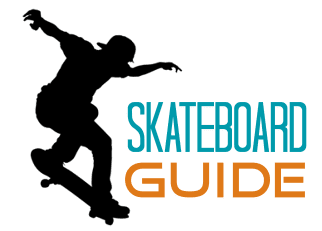Skateboarding is an exciting and dynamic sport that offers both fun and freedom. However, choosing the right skateboard as a beginner can be overwhelming due to the vast range of options available. A well-suited skateboard enhances stability, control, and overall enjoyment, making the learning process smoother. This guide will help you find the best beginner skateboard by covering essential factors like deck size, materials, wheels, and trucks. Additionally, our skateboard buying guide will answer common questions, such as “What size skateboard should I get?” Whether you’re looking to cruise or learn tricks, this guide ensures you make an informed and confident purchase.

Best Beginner Skateboard: Choosing Your First Board
For beginners, selecting the right skateboard can make the difference between an enjoyable learning experience and a frustrating struggle. A good beginner skateboard should be stable, durable, and easy to control. Here’s what you need to know before buying your first skateboard.
1. What Makes a Skateboard Beginner-Friendly?
When looking for the best starter skateboard, consider the following factors:
Deck Width & Length
Wider decks (7.5” to 8.25”) provide more stability, which is essential for beginners.
Material
Maple wood is the best choice for durability and flexibility. Avoid cheap plastic decks.
Trucks
High-quality aluminum trucks ensure smoother turns and better control.
Wheels
Soft wheels (78A-87A) offer better grip and a smoother ride, ideal for beginners.
Bearings
Look for ABEC-5 or ABEC-7 rated bearings for a smooth and consistent roll.
2. Top Beginner Skateboards to Consider
If you’re searching for the top beginner skateboards, here are some excellent options:
1. Powell Peralta Flight Deck Skateboard
- Durable and lightweight
- Offers great pop for tricks
- Best for beginners who want to progress quickly
2. Magneto Mini Cruiser Skateboard
- Great for commuting and cruising
- Compact size makes it easy to carry
- Soft wheels for a smooth ride
3. Santa Cruz Classic Dot Skateboard
- High-quality maple deck for durability
- Large, soft wheels perfect for beginners
- Excellent stability for learning the basics
4. Element Section Complete Skateboard
- Classic design with high-quality components
- Medium concave deck for easy control
- Suitable for both street and park skating
Each of these options has been positively reviewed in beginner skateboard reviews, making them great choices for those new to the sport.

Skateboard Buying Guide: How to Choose the Right Skateboard
When buying a skateboard, there are several important factors to consider. Whether you’re a complete beginner or looking to upgrade, this guide will help you make an informed decision.
1. What Size Skateboard Should I Get?
One of the most common questions beginners ask is “What size skateboard should I get?” The right skateboard size depends on your height, shoe size, and preferred skating style.
- Mini Decks (6.5” – 7.0”) – Best for kids under 10 years old.
- Medium Decks (7.0” – 7.5”) – Suitable for teens and smaller riders.
- Standard Decks (7.5” – 8.25”) – Ideal for most beginners and general street skating.
- Wide Decks (8.25” – 9.0”) – Best for transition skating (ramps, bowls, and pools).
For beginners, a deck width between 7.75” and 8.25” is recommended, as it offers a good balance between control and stability.
2. Types of Skateboards and Their Uses
There are several types of skateboards available, each designed for different riding styles:
Standard Skateboards
Best for street skating and learning tricks.
Cruiser Skateboards
Great for transportation and smooth riding.
Longboards
Designed for downhill rides and cruising.
Mini Boards & Penny Boards
Compact and easy to carry, best for casual riders.
If you’re a beginner looking to learn tricks, go for a standard skateboard. If you want a smooth ride for commuting, a cruiser skateboard is a great choice.
3. How to Choose Skateboard Deck Material
The best starter skateboard should have a 7-ply maple wood deck. Maple provides the best combination of strength and flexibility. Some high-end decks use carbon fiber layers for added durability, but for beginners, a standard maple deck is sufficient.
4. Skateboard Trucks: What You Need to Know
Trucks are the metal components that connect the wheels to the deck. Here’s what to consider:
Width
The truck width should match the deck width for balanced control.
Material
Aluminum trucks are the best option for durability.
Height
Low trucks offer more stability, while high trucks are better for turning.
5. Choosing Skateboard Wheels & Bearings
Wheels
- Soft Wheels (78A – 87A): Ideal for beginners and cruising.
- Medium Wheels (88A – 95A): Good for all-around use.
- Hard Wheels (96A – 101A): Best for tricks and skate parks.
Bearings
Bearings determine how fast and smoothly your wheels spin. Beginners should opt for ABEC-5 or ABEC-7 bearings for a smooth ride.
6. Pre-Built vs. Custom Skateboards
Pre-Built Skateboards
Ready to ride out of the box and great for beginners.
Custom Skateboards
Allow you to choose specific parts but require assembly.
For most beginners, a pre-built skateboard is the best option. Once you gain more experience, you can upgrade individual components to match your preferences.
Conclusion
Choosing the best starter skateboard is crucial for an enjoyable skateboarding experience. By considering factors like deck width, trucks, wheels, and bearings, beginners can find a skateboard that suits their needs. Our skateboard buying guide ensures you understand how to select the right board based on your skill level and riding style.
Whether you’re looking for stability while cruising or a board to start learning tricks, making the right choice will set you up for success. Now that you know what to look for, it’s time to hit the pavement, practice your skills, and enjoy the thrill of skateboarding!






